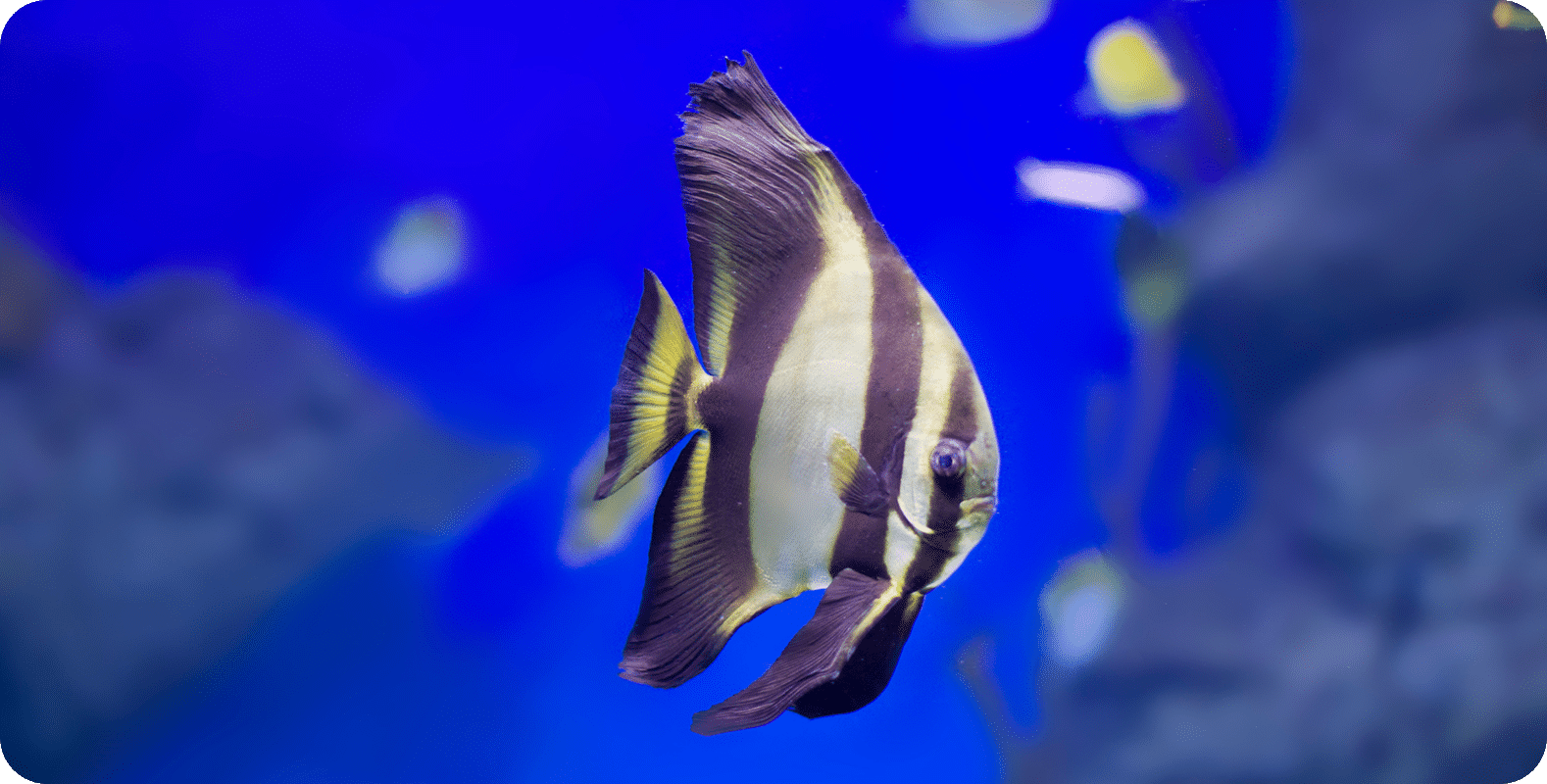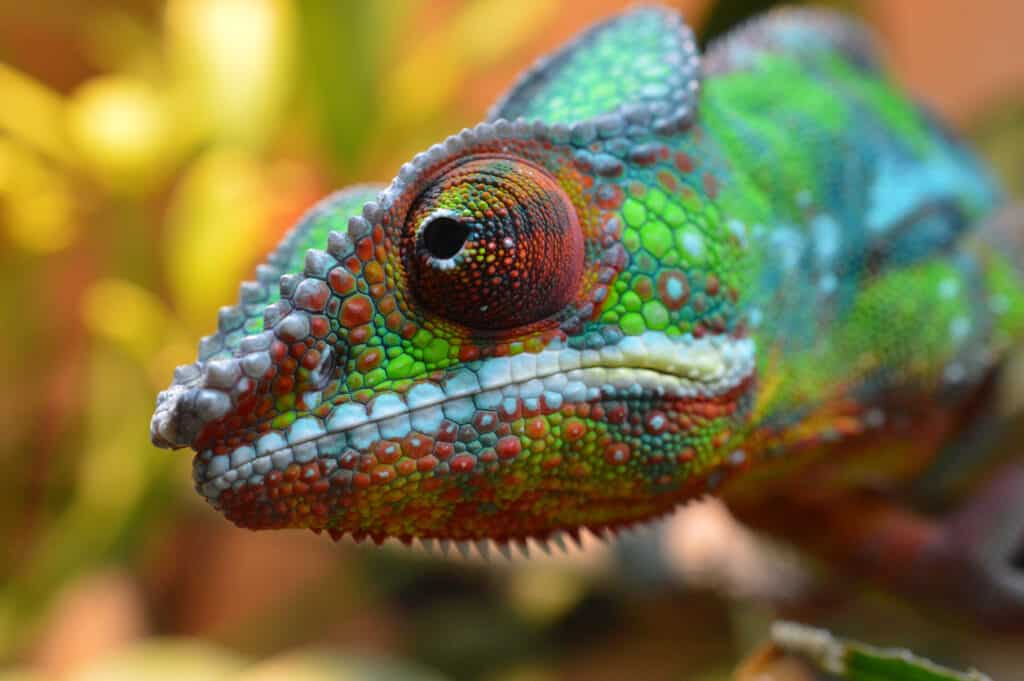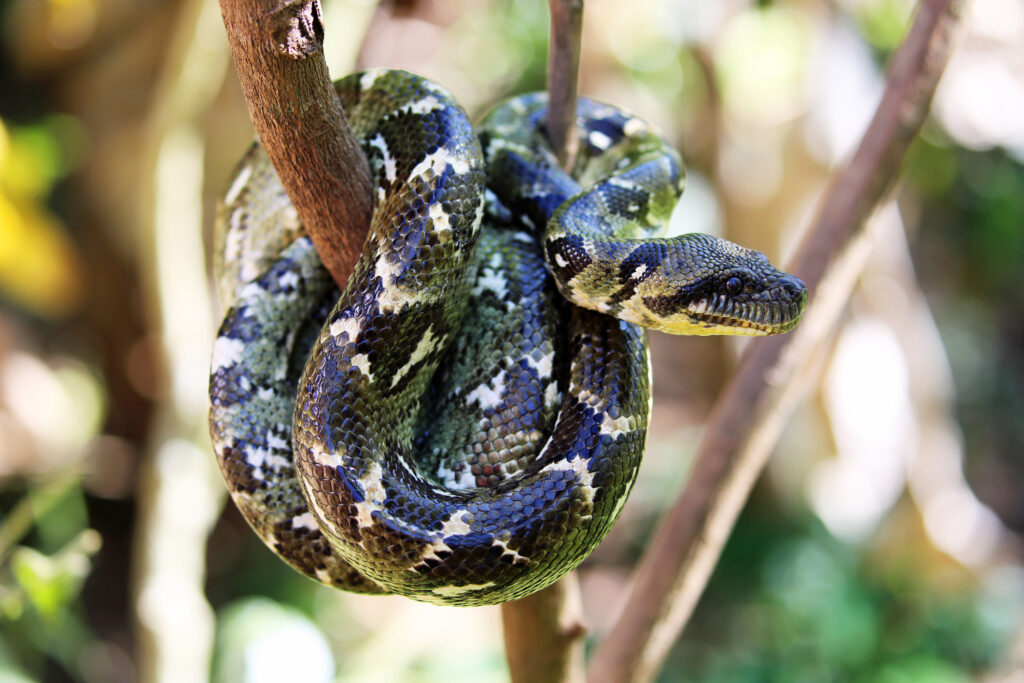What Animal Has the Most Legs? 5 Fascinating Facts About Millipedes
Most people know the fastest land animal is the cheetah, and the largest animal in the world is the blue whale, but do you know which animal has the most legs?
Today, we’re putting millipedes under the spotlight. From their prehistoric origins to their role in the ecosystem, let’s get our hands dirty and dig into some must-know facts about these amazing arthropods.
What animal has the most legs?
If you’ve ever wondered what animal tops the list for most legs, you’re in the right place! You might have guessed it’s a centipede or a millipede, but which one?
The Eumillipes Persephone is the first recorded true millipede, which has 1306 legs and is the animal with the most legs known in the world. This is found in Western Australia, with a cone-shaped head and a beak for feeding, and big, girthy antennae with no eyes.
Despite the name “millipede” (which means “thousand feet”), no species has exactly 1,000 legs, but whoever named them probably didn’t want to spend their day counting so many legs!
What is a millipede?
Millipedes are arthropods, just like crabs, lobsters, spiders, and insects too! That means they have segmented bodies, jointed legs, and an external skeleton called an exoskeleton.
Lots of animals fall into the phylum of Arthropoda, including Myriapoda, which is what millipedes are.
Centipede vs millipede: Key differences
People often mix up centipedes and millipedes, but they’re quite different. Here’s how to tell them apart:
- Appearance: Millipedes have round, tube-shaped bodies. Centipedes are flat and have longer antennae.
- Speed: Centipedes move fast. Millipedes are much slower.
- Diet: Millipedes eat decaying plant matter, which is why they don’t need to be fast. Centipedes are hunters that eat insects.
- Defence: Some centipedes bite and have venom. Millipedes coil up and may release defensive chemicals, but they don’t bite.
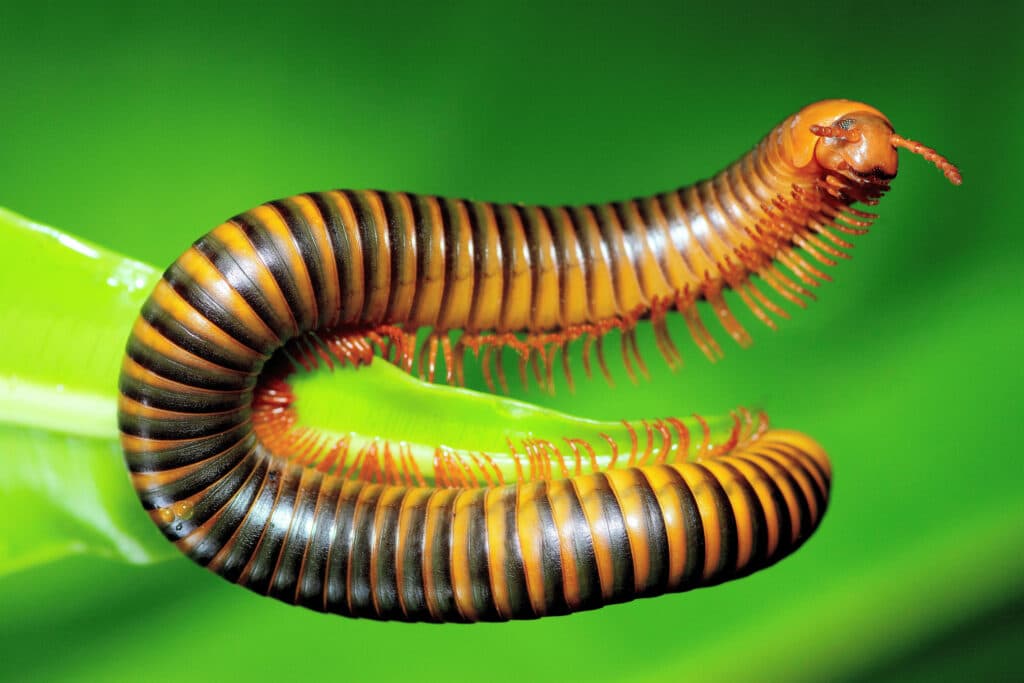
5 must-know facts about millipedes
Now that you know what they are and the differences between a centipede and a millipede, let’s take a closer look at what makes millipedes so unique.
1. How many legs does a millipede have?
Unlike things like spiders, which always have 8 legs, the number of legs that a millipede has depends entirely on the species it belongs to. Most millipedes have between 40 and 400 legs, but some, like Eumillipes Persephone, have over 1,000.
Each body segment (except for a few near the head) has two pairs of legs. This design helps them move in a smooth, wave-like pattern that’s quite mesmerising to watch.
2. Millipedes are one of the oldest creatures on Earth
One of the earliest known land animals was a millipede-like creature that lived over 428 million years ago. That’s older than dinosaurs, older than birds and even older than trees, so it’s fair to say that millipedes are absolutely ancient.
3. Millipedes are detritivores
Millipedes are known as detritivores, meaning that they survive mainly on a diet of decaying plant material. They break down the organic debris and then return the nutrients to the soil, serving an important function within their ecosystems.
4. In defence, millipedes coil up into a tight ball
At their heart, millipedes are lovers, not fighters. When they feel threatened, they curl up into a ball and secrete toxic chemicals out of their skin to ward off potential predators. Millipede with a side of hydrogen cyanide isn’t a particularly pleasant meal. Eating a millipede probably won’t kill you because of the small amounts of hydrogen cyanide they secrete, but it’ll probably give you an upset tummy.
5. Millipedes lay eggs in a nest
Female millipedes dig small chambers in the soil to lay their eggs. A single clutch can include 10-300 eggs. The eggs hatch into tiny versions of the adults, but with far fewer legs, which grow much later in life. Anamorphosis (the process of adding new body segments with each moulting cycle) adds more segments and legs until they reach their adult size and reproductive maturity, which can take several years.
All About the giant African millipede
Here’s everything you need to know about this impressive species.
What does a giant African millipede look like?
Giant African Millipedes (Archispirostreptus gigas) are large, rounded, and dark brown or black. They can grow up to 12 inches long, or about as long as a 30cm ruler.
They have two short antennae, and a pair of simple eyes called ocelli. Like all millipedes, they have no legs on their head segment, and their mouth is tucked underneath.
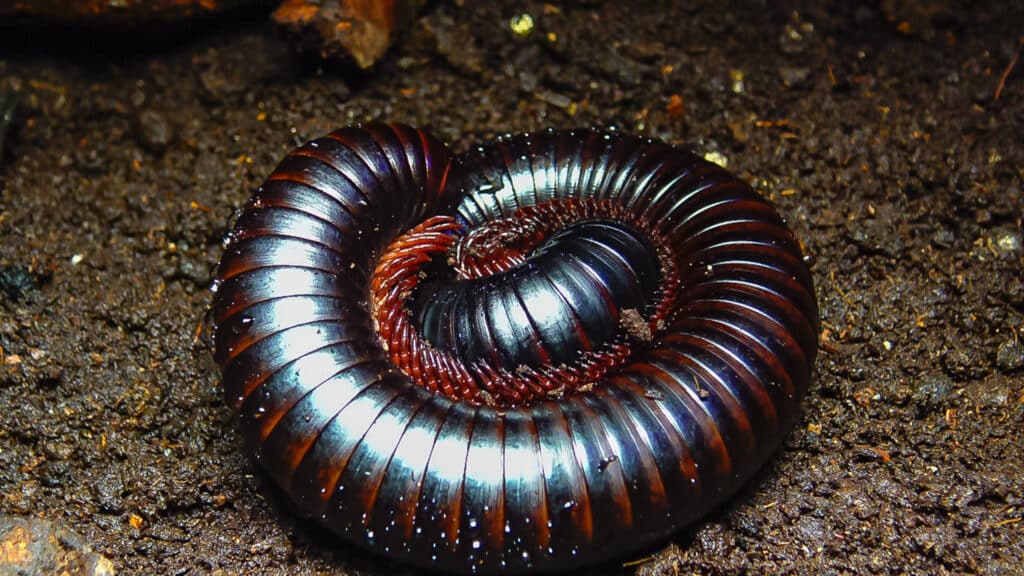
Giant African millipedes are the largest species of millipede
With over 10,000 species of millipede on the planet, the Giant African Millipede is comfortably the largest. They can have over 250 legs, and their thick bodies make them easy to spot even when in their natural rainforest habitat.
Giant African millipede habitat
These gentle giants are native to the rainforests of western Africa. They thrive in warm, humid environments and spend most of their time burrowing through leaf litter or soil.
Giant African millipedes have poor eyesight
Like many other millipedes, the Giant African Millipede doesn’t rely much on vision. Instead, it uses its antennae and legs to feel its way around. It may also use chemical cues, like scent, to communicate or find food.
Millipedes might not be fast or flashy, but they’re fascinating creatures with a long history and an important role in the natural world. From record-breaking leg counts to ancient fossils, they’re full of surprises.
Head over to our tickets page to book your tickets for your next visit to Blue Planet Aquarium.
